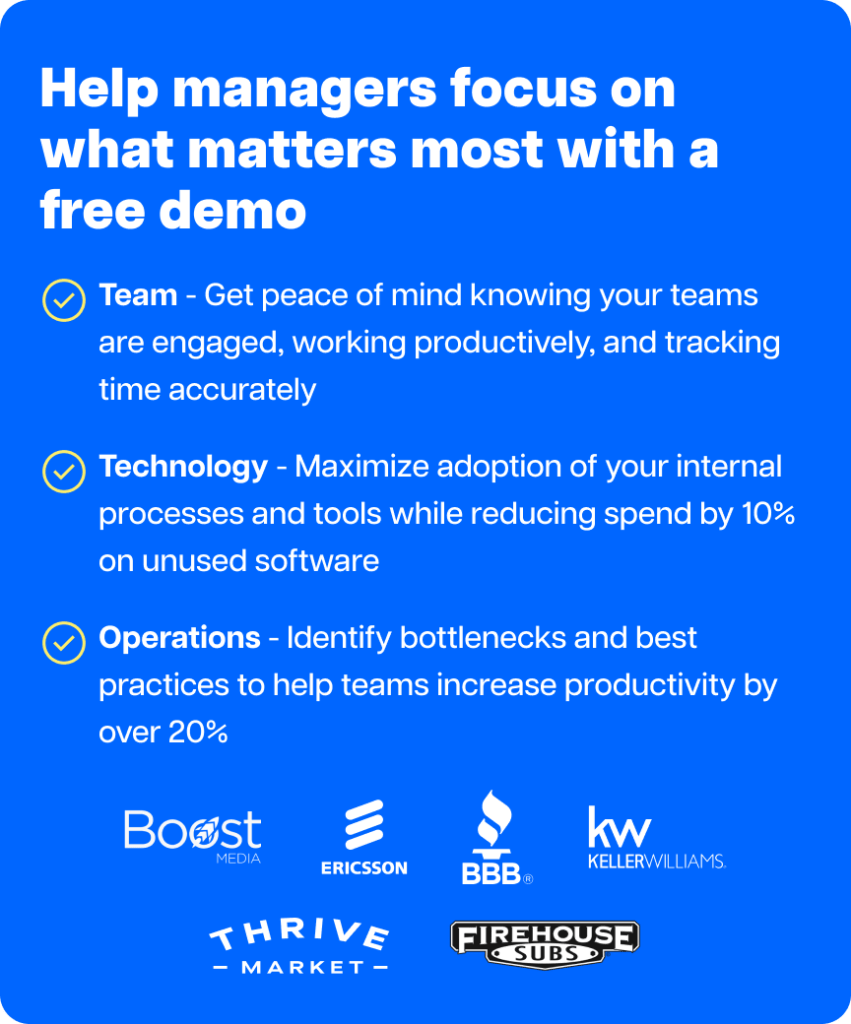Many western conglomerates offshore their business processes overseas, especially to Asian offshore locations like India, China, and the Philippines. These business processes typically include manufacturing, customer support, software development, etc.
Offshoring is a popular business strategy helping companies benefit from the lower cost of labor and identify untapped markets.
Still wondering companies use offshoring in order to do what exactly?
You’ve come to the right place for answers.
In this article, we’ll enlist the top four reasons to explain why companies use offshoring for their business operations. Additionally, we’ll explore some commonly asked questions about offshoring.
Let’s get started.
4 key reasons companies use offshoring for their business
The primary objective of any company to offshore its business process is to improve work efficiency and cut operational costs.
For your better understanding, we’ll discuss in detail the four main reasons companies adopt the offshoring strategy:
1. Reduce operational costs
The living cost and average salaries in the developing countries of Asia and Latin America are way less than those in North America. For instance, the cost of living index in the United States is 100.0, whereas the cost of living index in Brazil is 47.4. Consequently, the cost of labor, raw materials, and manufacturing is comparatively lower in any offshore company from these regions.
So you can cut back on hiring costs by recruiting workers and building a team in an offshore location.
Moreover, offshore locations such as India, Hong Kong, and Singapore are known for their highly qualified and technically competent workforce. This way, you’d be getting top-notch service at a much lower cost and increase your profit margin in the long run.
You can invest the capital saved in revamping other business areas like improving the marketing strategy or focusing on your core competency.
Further, several Asian governments (like China and South Korea) support manufacturing industries and supply chain management by offering tax incentives and subsidies. Asia also has bigger manufacturing plants and a vast labor market, which yields a higher output with quick turnaround times.
This, in turn, attracts foreign investors to offshore engineering and manufacturing.
Some prominent examples
A. Nestle
The Swiss food giant Nestlé partnered with Hogarth, a Mexican marketing company. Hogarth has an international network of offices with a delivery center in India and multiple production hubs in offshore locations like Mexico, Brazil, and other countries in Eastern Europe.
In 2018, Nestlé witnessed 43% cost savings in digital content production for Nestle Infant Nutrition from this partnership compared to the previous year. Offshoring also helped the brand save up to 80% in video production of Nestlé Recipes with culinary brands.
Learn the benefits and challenges of nearshoring to Mexico.
B. Ford Motor Company
The American multinational automobile manufacturer, Ford Motor Company (FMC), offshores software development and customer support services to India – helping them offer 24X7 customer support at a much lower cost.
Eager to make India your offshore partner?
Here’s everything you need to know about offshoring to India.
2. Access to global talent pool
Often companies from developed countries like the United States or Germany fall short of candidates with the expertise to execute specific tasks. One can solve this problem by creating an offshore outsourcing base for a few core activities in locations with no talent shortage.
For instance, developing countries like Brazil, Argentina, India, and China have a global reputation for providing advanced software development and IT services.
Owing to their comprehensive IT knowledge, employees from these offshore destinations tend to innovate and help elevate existing operations. So American companies can gain a competitive advantage over their rivals by hiring talented individuals from these developing countries.
Some prominent examples
A. Amazon
In 2018, Amazon decided to enhance its customer service by offshoring to Cebu, a location widely known for its information technology (IT) and business process outsourcing (BPO) services. Further, this city in the Philippines is home to several renowned universities, giving any offshoring company access to highly qualified professionals.
Go through this article to learn more about the top 10 BPO companies in the Philippines.
B. Apple
Apple has long been associated with the Chinese manufacturing firm Foxconn. Besides being their largest supplier of electronic products, Foxconn has helped Apple develop products in a shorter span. It’s because of China’s huge market of proficient workers. So recruiting a skillful foreign worker in China is way less time-consuming than finding the right fit in the United States.
Discover the top benefits and challenges of outsourcing to China.
3. Improve support processes
Support processes (like IT, marketing, human resources, etc.) essentially help you provide the necessary support to the primary operation of your business model.
Delegating such ancillary tasks to your in-house team may help you get things done within the home country under your direct supervision. But if you’re understaffed and your employees are overworked, it may reduce the overall organizational performance.
Instead, you can hire specialists in nearshore or offshore country to help you with your support processes.
For instance, a software company can offshore recruitment and marketing tasks to any country in Asia or Eastern Europe. As an added benefit, they can focus more on their core activities like product development, tool testing, and technical analysis.
And since you’ll be recruiting an offshore team specializing in these support services, it won’t compromise the work quality.
You’ll also need to ensure that you’re offshoring your business activity to a foreign country that enforces fair intellectual property laws. This way, you’ll have complete authority over the trade secrets, confidential data, and technical knowledge you share with the offshore team.
Some prominent examples
A. Siemens
The German manufacturing company Siemens has an offshore outsourcing base in India (Siemens Technology and Services Private Limited). Since India is known for its robust IT industry, this offshore company essentially handles its IT support and management services. Additionally, it helps Siemens focus on its core manufacturing operations and production of raw materials for the healthcare and transportation industries.
Here’s a comprehensive guide on outsourcing to India.
B. Wells Fargo
The American multinational financial services company Wells Fargo & Co. offshore software development and customer support roles to the Philippines. Such a strategy allows Wells Fargo to focus on its critical financial services and enhance digital banking services for its customers.
Read this article to know the average salary of an employee in the Philippines.
4. Tap into new markets
Setting up an offshoring company in a different country may enable the organization to widen its customer base. It’s because your offshore team can help you explore new markets in various overseas locations and emerging economies.
An offshore employee may better understand the current market trends and business risks specific to a region that you may not be aware of. Further, they can help you identify suitable offshore destinations or neighboring countries offering flexible tax systems and government incentives.
However, you cannot expect such knowledge and insights from your employees in the home country.
Let’s say you own a foreign company based in New York and have an offshore team in South Korea. The South Korean team can give you more accurate information about the working conditions and wage rates in their neighboring countries like China than any employee from the United States.
So one offshore base can become your gateway to discovering another offshore base with similar or even higher business potential.
Some prominent examples
A. Samsung
The South Korean multinational electronics corporation, Samsung, offshores its manufacturing activities to Vietnam. The electronic items produced in this offshore country are also sold in nearby Southeast Asian countries like China and Singapore. Further, these countries act as a gateway to the international market, helping Samsung expand its supply chain and customer base.
Read this article to find out the average salary in China.
B. Sony
The Japanese conglomerate, Sony, had started manufacturing radios, television sets, etc., in its offshore outsourcing base in South Korea. Soon, the company set up manufacturing plants in other Asian countries like Taiwan, Malaysia, and even Singapore. They could target a bigger audience and amp up their production through the large Asian labor force.
Willing to recruit a software developer from South Korea?
Here’s everything you need to know about the average salary in South Korea.
Got your answer to companies use offshoring in order to do what?
Now let’s go through some other facts related to offshoring that can help you create an effective offshoring strategy.

Some FAQs about offshoring
Here are answers to some of the most general queries about offshoring.
1. What is Offshoring?
Offshoring is the process of conducting some of the company’s core activities and operations overseas, i.e., away from the home country.
It involves outsourcing specific processes (accounting, administrative, customer service, manufacturing operations, IT services, etc.) to employees in different countries. More importantly, it includes relocating a company’s entire operation to an offshore location to take advantage of cheap labor or tax incentives.
Additionally, offshoring often allows European and American companies to improve their work turnaround time by conducting some operations in different time zones. Even when your employees in the home country are unavailable, you can approach your offshore employees to tackle issues or make progress, thus reducing downtime.
Let’s say your company is based in Sweden with an offshore outsourcing base in the Philippines. Now since the Philippines is roughly six hours ahead of Sweden’s time, the working hours for your employees in both locations will be different.
So if there arises an IT emergency when it’s past midnight in Sweden, you can reach out to your offshore employees in the Philippines. This way, you can reduce wait time and prevent any disruption in the business activity.
They are mainly of two types of offshoring:
- Product offshoring: When your product is manufactured in a different country and is imported to sell in your home country.
- Service offshoring: When your product is manufactured in the home country, but ancillary offshore services like customer support, telecommunication, human resources, etc., are outsourced to a foreign country.
2. Offshoring vs. Outsourcing: What are the differences?
Although offshoring and outsourcing share some similarities, they are not the same. So you need to figure out which of these methods will align perfectly with your business needs.
Here’s a comparison table for your better understanding:
| Offshoring | Outsourcing | |
| Overview | Offshoring involves moving work processes and hiring employees in a foreign country. Businesses may set up a branch or unit of their business in a different country or hire a third-party vendor there (offshore outsourcing). | Outsourcing involves contracting work out to an external organization or a third-party service provider (vendor, supplier, company). It usually includes tasks for which you do not have the required expertise or resources. |
| Risks | Offshoring risks include increased vendor’s failure to deliver exact requirements, work delays due to language barriers amongst employees, etc. | Outsourcing risks include conflict of interests between clients and vendors, intellectual property theft, etc. |
| Examples | Ford sets up a manufacturing unit in China to benefit from the low cost of labor and access to certain automotive raw materials. | Ford hires a third-party vendor specializing in customer service in Texas instead of hiring full-time call center employees at the head office. |
Here’s an in-depth explanation of the differences between offshoring vs. outsourcing.
3. What do you need to do before you offshore?
Here are some of the things that you need to do before you consider offshoring any business function:
- Assess the existing business process in your organization and identify which areas require particular expertise or support that can be offshored.
- Outline the benefits and risks of offshoring any operation to a different country.
- Draft a plan of action for your offshoring strategy.
- Communicate the plan to your employees and train them, so they’re well-equipped to deal with new challenges in the business environment.
- Establish a backup plan to counter any potential risks like loss of quality control, hidden costs of offshore outsourcing, data security, etc.
- Constantly monitor and evaluate if the offshore initiative meets the organization’s goals.
Besides this, you’ll also need to use a productivity software suite to track and improve work efficiency.
Why?
It’ll help you supervise the offshore operation even when your employees work in a different continent and time zone. You can know when they are taking a break, how many hours they put in each day, and how long they are taking to finish specific tasks.
Time Doctor is one such feature-rich time tracking tool that can help you with this end goal.
With this productivity management software, you can gain insights into your offshore team’s performance and even create work schedules.
Final thoughts
Offshoring helps you expand your business with a highly skilled team, target new consumers, lower labor costs, and eventually increase your profit margin.
It’s beneficial for companies in the manufacturing sector, and industries like call centers, e-commerce, and more. It enables you to scale up any business function by hiring employees with expertise in specific areas.
However, you need to consider your objectives, growth strategy, and other business expectations before partnering with any offshore company.
You can refer to this article to understand the key reasons for offshoring and how it can benefit your company in the future.

Andy is a technology & marketing leader who has delivered award-winning and world-first experiences.


